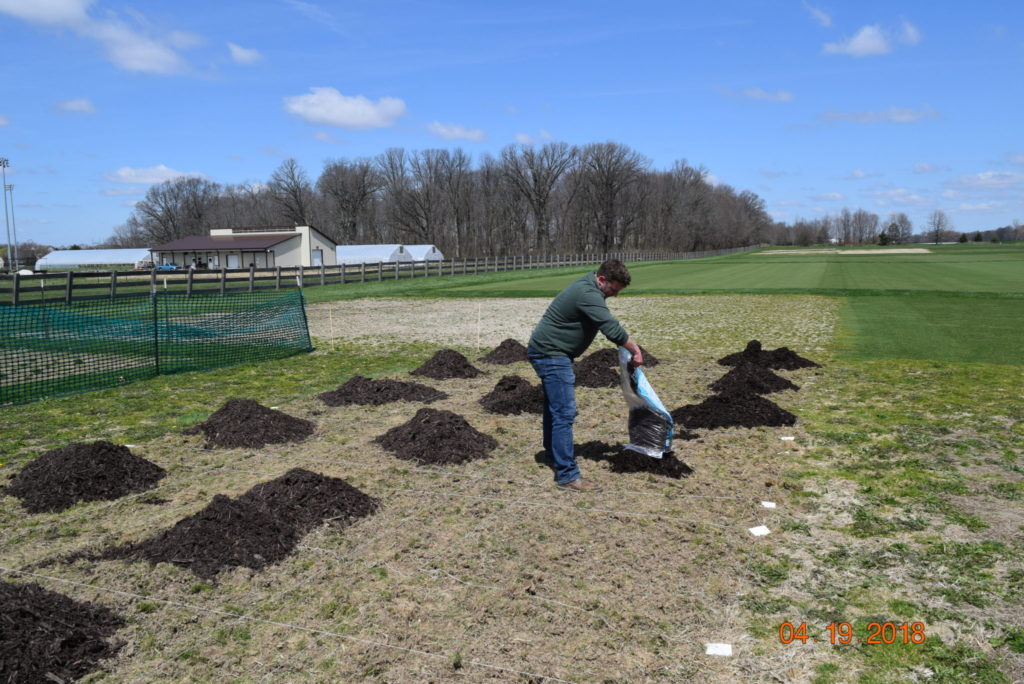When spring mulching occurs, most companies will apply a preemergence herbicide for extending weed control. It is well known that the combination of mulch and preemergence herbicides is a very effective method in controlling weeds (https://www.purduelandscapereport.org/article/cultural-plus-chemicala-good-weed-control-combo-in-landscape-beds/). When applying preemergence herbicides with mulch, which should be first for the most effective control?
This common question is answered by knowing the herbicides that you will be applying. Herbicides that are volatile, such as dichlobenil (Casoron), or that photodegrade quickly (DNA-dinitroaniline herbicides such as: trifluralin (Treflan), oryzaline (Surflan), etc.) will be most effective applying prior to mulching to prevent degradation of the chemical. Herbicides that aren’t as susceptible to degradation will be most effective on top of the mulch by binding to the organic matter of the mulch.

Figure 1. Herbicide and mulch trials at the Daniel Turf Center at Purdue University.
A study examining the effect of EPTC (Eptam 5G) on yellow nutsedge above and below pine straw, pine bark, and shredded cypress found that the greatest control was found below shredded cypress (Chen et.al., 2013). Similar results of oryzalin were found in Case and Mathers (2006). It is speculated the reason for the increase in control under mulch is due to the volatility of EPTC and oryzalin (Marble, 2015).
Size of bark materials were found to be a significant factor in herbicide placement in Case and Mathers (2006). Large pine bark nuggets were most effective at weed control when the herbicides were placed on top of mulch, with the exception of oryzalin.
When applying mulch and herbicides this spring, know the properties of your herbicides to determine the most effective location for maximum weed control. If possible, split applications will extend the control through early summer. Always ensure a water event (rainfall or irrigation) after applying preemergence herbicides to ensure efficacy.
Literature Cited:
Case, LT, Mathers, HM (2006) Field evaluation of herbicide treated mulches. Proc South Nur Assoc Res Conf 51:402.
Chen Y, Strahan RE, Bracy RP (2013) Effects of mulching and preemergence herbicide placement on yellow nutsedge control and ornamental plant quality in landscape beds. Hortic Technol 23:651–658.
Marble, C. (2015) Herbicide and mulch interactions: A review of the literature and implications for the landscape maintenance industry. Weed Technology. 29: 341-349.